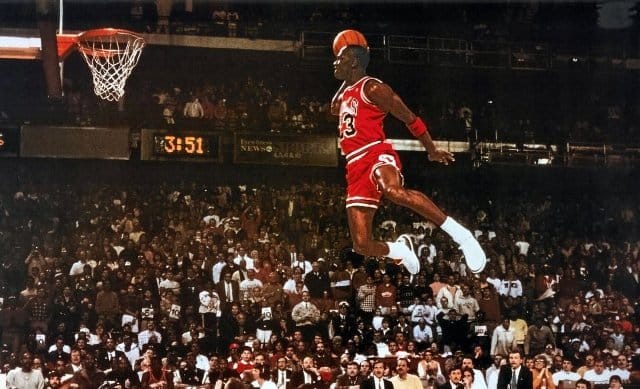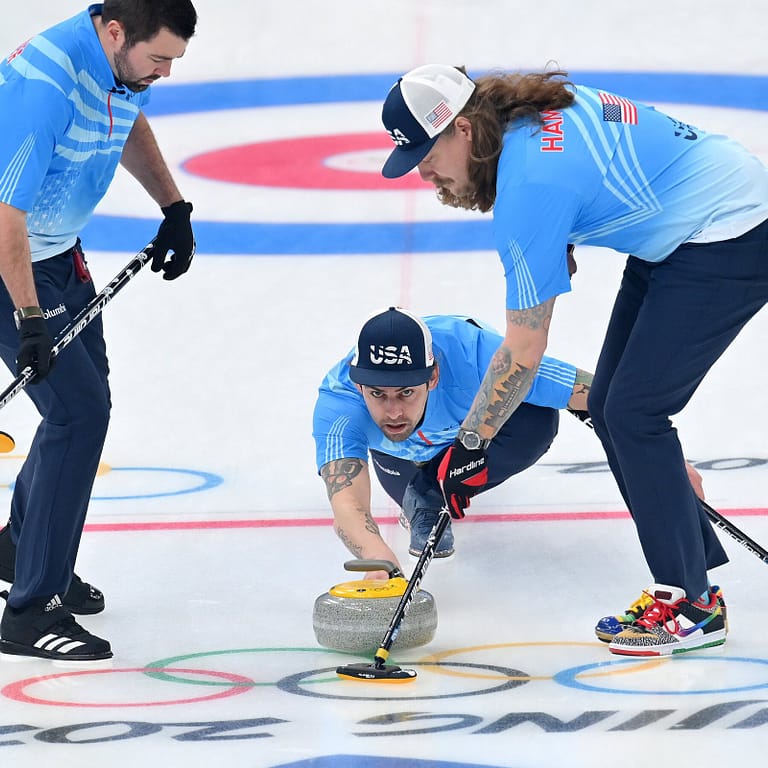Discover the intriguing origins of mainstream sports that defy conventional expectations. From the unexpected inventiveness of basketball in a Canadian gymnasium to the ancient battle training roots of Kabaddi in India, each sport unfolds a unique narrative. Uncover the historical twists that shaped familiar pastimes like volleyball, cricket, and sumo wrestling. Journey through the evolution of unconventional sports like parkour and underwater hockey, exploring their unexpected paths from casual activities to globally celebrated competitions. Delve into the extraordinary stories behind these 15 popular sports with origins that defy the ordinary.
1. Basketball

Basketball, a globally beloved sport, has a rather unexpected origin. In 1891, Dr. James Naismith, a Canadian physical education instructor, found himself facing the challenge of keeping his students active indoors during the harsh winter months. Seeking a solution, he devised a game that involved throwing a soccer ball into peach baskets suspended at each end of the gymnasium. The game quickly gained popularity, and Naismith’s original 13 basic rules laid the foundation for modern basketball.
Today, basketball is played at various levels, from casual pickup games in local parks to highly competitive professional leagues worldwide. The sport has evolved significantly since its inception, with changes in rules, equipment, and playing styles. The NBA (National Basketball Association) stands as one of the most prominent professional basketball leagues globally, showcasing elite talent and drawing a massive global fan base.
2. Volleyball

William G. Morgan, a physical education instructor in 1895, sought to create a less strenuous alternative to basketball. The result was volleyball, originally named “mintonette.” Combining elements of basketball, baseball, tennis, and handball, Morgan’s intention was to develop a game that required less physical exertion while maintaining a high level of enjoyment. The sport gained popularity and underwent rule modifications, eventually becoming the dynamic and competitive game we recognize today.
Volleyball has become a staple in both recreational and professional settings. From beach volleyball to indoor competitions, the sport boasts diverse formats and is a prominent feature in the Olympic Games. The simplicity of its equipment and the accessibility of its rules have contributed to volleyball’s widespread appeal and its status as a globally recognized sport.
3. Table Tennis
Originating as a parlor game in England during the late 19th century, table tennis has an unexpected journey to becoming an Olympic sport. Initially called “ping pong,” the game involved using household items like books for paddles and a line of corks as the ball. As the sport gained popularity, standardized equipment was developed, and official rules were established.
Table tennis has evolved into a fast-paced and highly strategic sport, featuring intense rallies and lightning-fast reflexes. It became an Olympic sport in 1988, underscoring its global significance. With professional leagues, international competitions, and a massive recreational player base, table tennis has transcended its humble parlor game origins to become a respected and widely played sport worldwide.
4. Badminton
Badminton, with its roots in ancient civilizations, took on a modern form in mid-19th century British India. British army officers stationed in Pune adapted a children’s game called “Poona” into the competitive sport we now know as badminton. The game’s name is derived from Badminton House in England, the Duke of Beaufort’s estate.
Badminton has become one of the fastest racquet sports, characterized by quick reflexes, agility, and precise shot placement. It gained international recognition and became an Olympic sport in 1992. With professional tournaments, competitive leagues, and a vibrant recreational scene, badminton continues to captivate players and fans alike across the globe.
5. Frisbee (Ultimate Frisbee)

The origins of the Frisbee date back to the 1920s, where college students in the United States engaged in an unconventional pastime using empty pie tins from the Frisbie Baking Company. The game involved tossing these tins to each other, yelling “Frisbie” as a signal. In the 1960s, this informal activity evolved into the organized sport known as Ultimate Frisbee.
Ultimate Frisbee combines elements of soccer, basketball, and football, played with a flying disc instead of a ball. The objective is for teams to pass the disc among players and score points by catching it in the opposing team’s end zone. Known for its emphasis on fair play and sportsmanship, Ultimate Frisbee has grown into a widely played sport, with organized leagues, tournaments, and a dedicated community of enthusiasts globally.
6. Modern Pentathlon
The Modern Pentathlon, a unique and diverse sporting event, was created by Pierre de Coubertin, the founder of the modern Olympic Games. Debuting in 1912, the pentathlon aimed to simulate the skills required by a 19th-century soldier behind enemy lines. The event comprises five disciplines: fencing, swimming, equestrian show jumping, running, and shooting.
The Modern Pentathlon showcases versatility, requiring athletes to excel in both physical and technical disciplines. Originally designed to embody the ideal traits of a well-rounded soldier, the pentathlon has evolved into a celebrated Olympic event. Athletes compete not only for individual glory but also to honor the historical and military origins that set this sport apart from traditional athletic competitions.
7. Curling

Curling, a sport with ancient Scottish roots, has a somewhat peculiar origin. The game, which involves sliding stones on ice towards a target area, dates back to the 16th century. The early version of curling was played outdoors on frozen lochs, and stones with handles were used for added control.
Over time, curling moved indoors, and the sport gained popularity in Canada, where it eventually became a national pastime. With its unique combination of strategy, teamwork, and precise stone placement, curling has evolved into a highly competitive sport played on an international stage, complete with professional leagues and major championships.
8. Parkour

Parkour, often described as the art of efficient movement through obstacles, has its origins in France in the 1980s. Developed by David Belle and his friends as a training method, parkour draws inspiration from military obstacle courses. Practitioners, known as traceurs, aim to navigate urban environments with fluidity, combining elements of running, jumping, and climbing.
Parkour has gained global recognition not only as a physical discipline but also as a form of self-expression and creativity. Featured in movies and commercials, parkour has transcended its niche origins to become a mainstream cultural phenomenon, inspiring individuals to explore movement and overcome obstacles in their environment.
9. Kabaddi

Kabaddi, an ancient Indian sport, has roots deeply embedded in mythology and warfare. The sport evolved from a traditional game called “ha-du-du,” which was used as a form of military training. Dating back centuries, Kabaddi gained prominence as a popular village sport, often played in rural settings. Today, Kabaddi has transformed into a fast-paced and competitive team sport, where players strive to tag opponents while holding their breath and chanting “kabaddi.”
The sport has gained international recognition, with professional leagues, world championships, and inclusion in multi-sport events. Kabaddi’s unique blend of strategy, strength, and agility has captivated audiences, making it a thrilling spectacle that showcases the rich cultural heritage from which it originated.
10. Underwater Hockey

Underwater Hockey, an unconventional sport, originated in England during the 1950s as a way for divers to stay active during the winter months. Initially known as “Octopush,” the game involves teams pushing a puck along the bottom of a swimming pool using small sticks. Players wear snorkeling gear and navigate the underwater terrain, making it a challenging and unique form of hockey.
Underwater Hockey has developed a dedicated global following, with organized leagues and competitions held in various countries. The sport’s emphasis on teamwork, breath control, and underwater maneuvering sets it apart from traditional surface-based sports. Underwater Hockey provides a thrilling and unconventional experience, blending elements of hockey, snorkeling, and strategy beneath the water’s surface.
11. Cricket
Cricket, a sport with roots dating back to 16th-century England, has a history intertwined with pastoral pastimes. Originally played by shepherds, the game’s popularity grew in the 18th century, evolving into a formalized sport with rules and regulations. Cricket’s unique terminology, such as “batsman,” “wickets,” and “runs,” reflects its historical and cultural origins.
Today, cricket stands as one of the most popular sports globally, with international competitions like the ICC Cricket World Cup capturing the attention of millions. From Test matches that can last up to five days to the fast-paced excitement of Twenty20 cricket, the sport has diverse formats, attracting a wide range of players and fans worldwide.
12. Hurling

Hurling, an ancient Irish sport, has origins deeply rooted in Celtic history and mythology. With a history dating back over 3,000 years, the sport has ancient roots in warfare training and is often associated with the hero Cú Chulainn. Hurling involves players using a flat wooden stick called a hurley to strike a small ball (sliotar) between opposing goals.
Hurling remains a cherished part of Irish culture, with a passionate following at both the grassroots and elite levels. The sport’s fast-paced nature, skillful stickwork, and physicality make it a thrilling spectacle. Hurling’s rich history and cultural significance contribute to its enduring popularity, making it one of the oldest and most unique field games in the world.
13. Sumo Wrestling
Sumo wrestling, Japan’s national sport, has a history deeply rooted in religious rituals and cultural practices. Originating from Shinto rituals designed to entertain the gods, sumo evolved into a competitive sport over the centuries. The sport’s earliest form was often linked to harvest celebrations, with wrestlers competing to secure a bountiful harvest for their communities.
Sumo wrestling involves two wrestlers, or rikishi, attempting to force each other out of a circular ring or to touch the ground with any body part other than the soles of their feet. The sport is steeped in tradition, with elaborate pre-match rituals, strict rules, and a hierarchical structure within the sumo stables.
Sumo has transcended its cultural origins to become a global spectacle, attracting fans from around the world. Tournaments, or basho, held regularly in Japan, draw massive crowds, and top sumo wrestlers achieve celebrity status. The sport’s unique mix of athleticism, ritual, and tradition continues to captivate audiences, making sumo wrestling an integral part of Japan’s cultural identity.
14. Wrestling
Wrestling, with its origins in ancient civilizations, holds a significant place in the history of human competition. Dating back to the ancient Olympic Games in Greece and similar contests in ancient Egypt and Mesopotamia, wrestling has evolved into various styles and disciplines worldwide. The sport is characterized by intense physicality, technique, and a rich tradition of competition.
Wrestling’s global appeal is evident through its inclusion in both the ancient and modern Olympic Games. The sport features distinct styles such as freestyle and Greco-Roman wrestling, each with its own set of rules and techniques. Wrestling demands strength, agility, and strategic thinking, making it a challenging and dynamic pursuit for athletes across diverse cultures.
With a global network of competitions, from local tournaments to the pinnacle of the Olympic stage, wrestling continues to be a sport that resonates with a broad audience. Its enduring popularity speaks to the universal appeal of the ancient art of grappling.
15. Polo

Polo, a sport associated with aristocracy and elite society, has ancient origins but took a more recognizable form in Manipur, India. Originally a training game for cavalry units, polo involved players on horseback attempting to score goals with a mallet. British officers stationed in India during the 19th century witnessed the game and brought it back to England, where it gained popularity among the upper classes.
Polo’s elegance and the thrill of horsemanship contributed to its reputation as the “sport of kings.” The sport spread internationally, with clubs and tournaments established in various countries. Today, polo remains a symbol of luxury and sporting prowess, with high-profile events like the Cartier Queen’s Cup and the U.S. Open Polo Championship attracting spectators and participants from around the world. Despite its noble origins, polo has evolved into a dynamic and inclusive sport, welcoming enthusiasts from diverse backgrounds to experience the excitement of the game.

